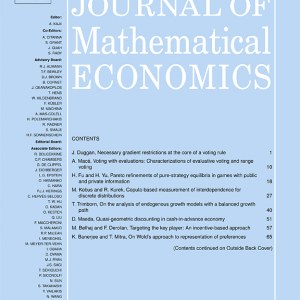
Boonen, T. (2019). Equilibrium recoveries in insurance markets with limited liability Journal of Mathematical Economics, 85:38--45.
-
Affiliated authorTim Boonen
-
Publication year2019
-
JournalJournal of Mathematical Economics
This paper studies optimal insurance in partial equilibrium in case the insurer is protected by limited liability, and the multivariate insured risk is exchangeable. We focus on the optimal allocation of remaining assets in default. We show existence of an equilibrium in the market. In such an equilibrium, we get perfect pooling of the risk in the market, but a protection fund is needed to charge levies to policyholders with low realized losses. If policyholders cannot be forced ex post to pay a levy, we show that the constrained equal loss rule is used in equilibrium. This rule gained particular interest in the literature on bankruptcy problems. Moreover, in the absence of a regulator, the insurer will always invest all its assets in the risky technology.